2020 is the perfect year to push for change. There’s an urgency to remove digitalization roadblocks, and ITOps are being challenged to play a larger part in organizational performance. More than ever, they are being relied upon for ensuring the success of digital empowerment initiatives, overseeing the key IT services and underlying infrastructure where IT and business performance merge. Maintaining the status quo is no longer an acceptable course of action. If you’re a voice for change in your organization, this blog post will help you advocate for a new approach to IT monitoring. Show your team how a service-based IT monitoring strategy, compared to a device-centric approach, can help optimize costs and performance, avoiding the pitfalls of ITIM obsolescence (and boredom) along the way.
What is device-centric monitoring
Device-centric monitoring refers to a practice still well rooted in today’s ITOps organizations: using reactive metrics, such as resource consumption and availability targets as the principal measure of IT performance.
What device-centric monitoring looks like
Read on to see what service-centric monitoring looks like.
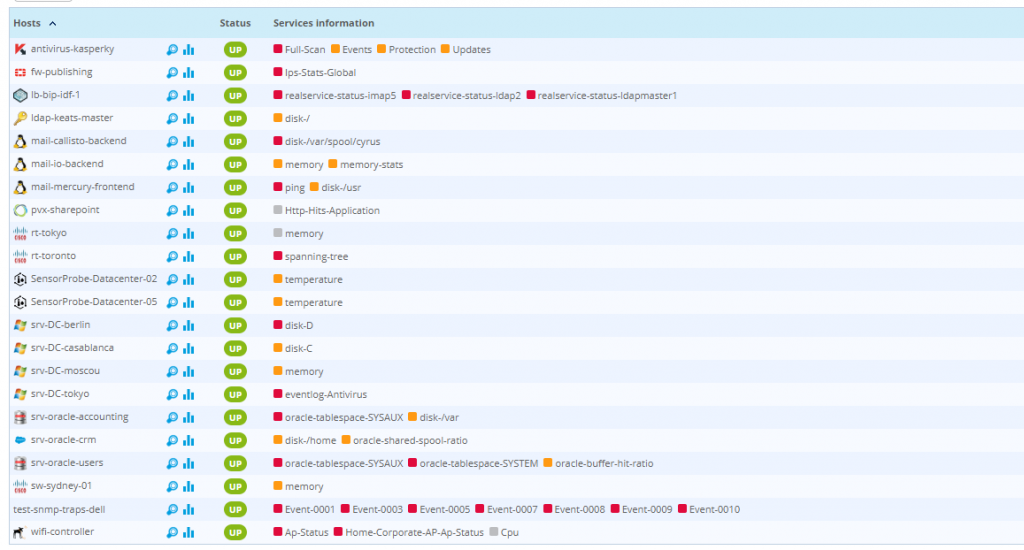
Why device-centric monitoring is obsolete
IT infrastructure can no longer be considered as a monolithic ensemble of interconnected devices—no more than IT monitoring should be limited to ensuring the green light is flashing on. You don’t have to ditch old school monitoring practices centered on the availability of computing, storage, and network resources just yet. But you do need to factor in that your business’s IT estate spans clouds, containers and IoT, which calls for a new approach to monitor, measure and report on IT performance.
What should device-centric monitoring be replaced with?
The new focus of ITIM is on IT services, not devices. Devices, hosts and domains forming the backbone of digital business activities are mapped so that ITOps can measure the availability and performance of entire workflows, from cloud to edge. The ultimate goal of service-centric monitoring is to continuously improve business performance through flawless, frictionless IT experiences.
“The pandemic is forcing ITOps to accelerate their own digital transformation, aligning their vision of IT to their organization’s performance goals. The focus is on the overall behavior of multiple, complex IT workflows, as they contribute to innovative customer experiences and efficient business processes.”
The benefits of adopting service-based monitoring are numerous
- Better engagement of IT teams through more accurate and relevant alerts and notifications and better event management ergonomics.
- Higher reactivity and shorter mean time to repair (MTTR).
- Constant visibility on KPIs and SLAs, including advanced reporting capabilities.
- Improved collaboration, decision-making and capacity planning across the chain of IT and business stakeholders.
- Continuous cost and performance optimization.
What should you start seeing once device-based monitoring is ousted?
- Maps that correlate IT services to the applications, middleware and equipment they rely on, identifying logical relationships and dependencies, for potent diagnosis and resolution capabilities.
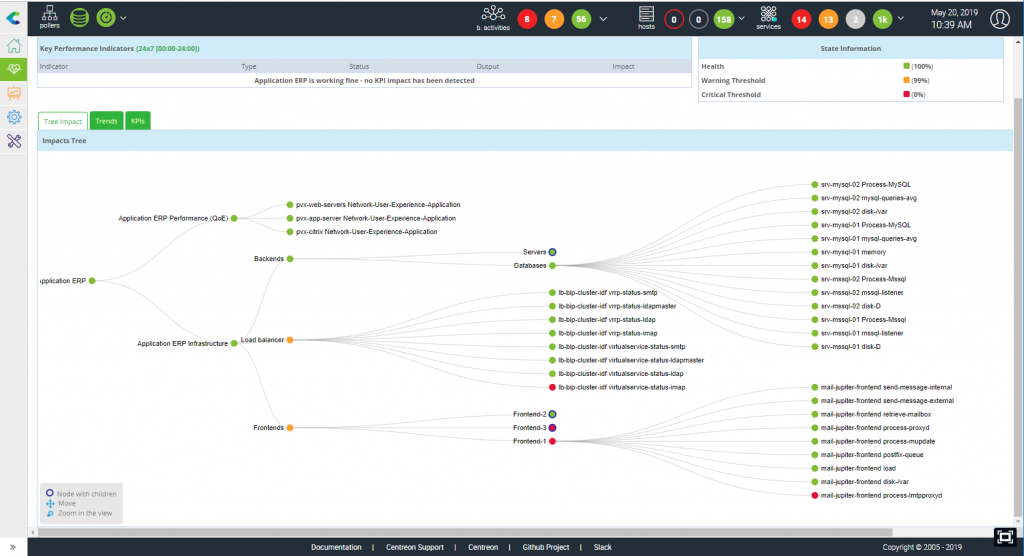
- Dashboards and reports that contextualize service maps to UX monitoring for comprehensive, end-to-end monitoring that’s focused on the big picture of service performance while allowing drilling down to the details in just a few clicks.
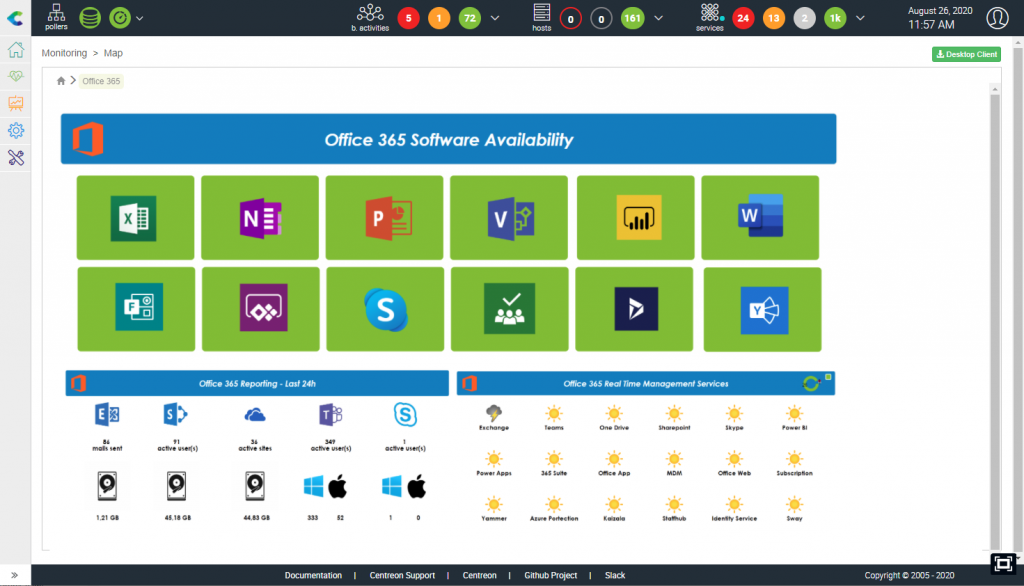
- Constant correlation of IT-centric and user-centric indicators for integrated and accurate SLA reporting and informed decision-making, bridging the gap between IT and business performance.
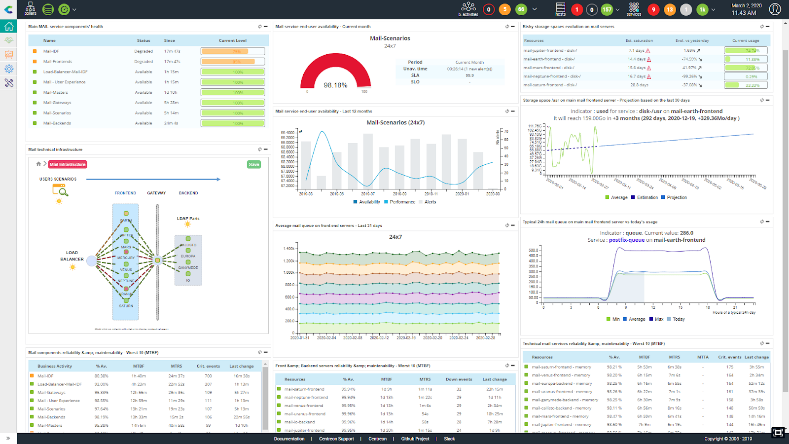
—But you can still keep an eye on availability and resources.
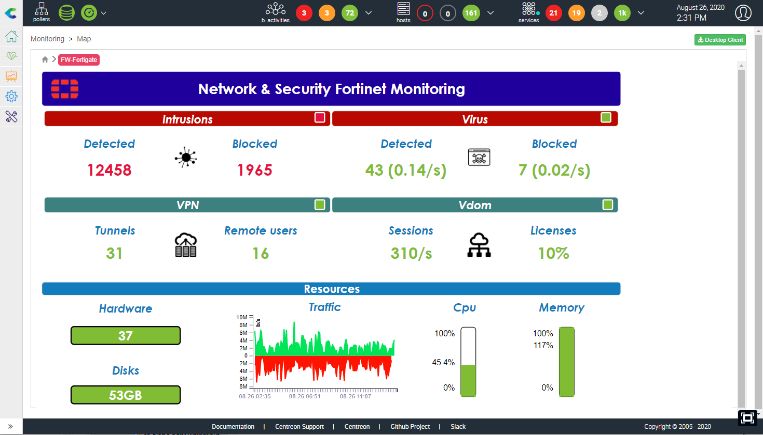
Keep your finger on the pulse of IT performance with some of Centreon’s key features:
Service Mapping
Stay focused on the big picture: watch a real time, transit-like business-critical IT service maps that show applications, middleware or infrastructure components.
Collaborative dashboards and reports
Share top down views along with customized, relevant information with key stakeholders-from IT specialists to business owners to the management team-enabling efficient collaboration in designing and constantly improving IT operational excellence and flawless digital experiences.
Business Context
Add contextual business insights to the mix, expanding awareness beyond IT. This will help you ensure IT operations are constantly aligned to business objectives, control costs and capacity in real time, and manage SLAs.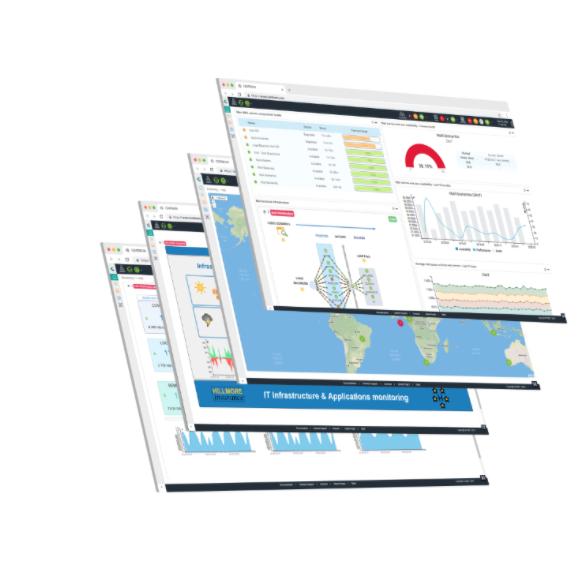 Centreon supports an approach to ITIM that’s highly collaborative and customizable. ITOps and business stakeholders share a common view. All can easily navigate between multiple types of customized views. Each get exactly the tools and detail level they need.
Centreon supports an approach to ITIM that’s highly collaborative and customizable. ITOps and business stakeholders share a common view. All can easily navigate between multiple types of customized views. Each get exactly the tools and detail level they need.
Prepare for change! 6 ways you can dig deeper into the topic of service-centric monitoring:
- Browse our library of tutorials for a hands-on approach to understanding service-based monitoring.
- Check out and share some insightful webinars.
- Play with our online demo or ask us to give you a customized tour to learn more on service-based IT monitoring.
- Learn from the experience of other Centreon users who have developed monitoring superpowers.
- Read this guide on adapting IT monitoring to the pressures of your organization’s pandemic response.





